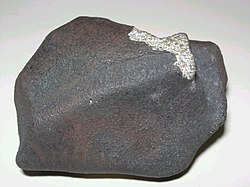Marília
Marília, São Paulo | |
|---|---|
| File:Vistadocentro marilia.jpeg | |
| Nickname: National Food Capital | |
| Country | Brazil |
| State | São Paulo |
| Government | |
| • Mayor | Mário Bulgarelli |
| Area | |
| • Total | 1,173 km2 (453 sq mi) |
| Elevation | 660 m (2,170 ft) |
| Population (2009) | |
| • Total | 225,938 |
| Time zone | UTC-3 (Horário Oficial de Brasília) |
| • Summer (DST) | UTC-2 (Horário Oficial de Verão) |
| Website | http://www.marilia.sp.gov.br |
Marília is a city located in the interior of state of São Paulo in Brazil. The population is approximately 218,113 (est.2006) and its area is 1,173.1 km2. It's the 13th largest city in the state.
History
The city was founded on April 4, 1929, and its name came from the poem Marília de Dirceu written by Tomás Antonio Gonzaga during the Inconfidência Mineira revolution in 18th century. In the beginning, the economy of Marilia was based on the production of coffee and later replaced by cotton. Thus, in 1934 and 1935, two cotton seed oil factories were installed in the city. With the coffee boom in the state and later the industrial development gave birth to the construction of a railway that linked Marilia with many cities in the State of São Paulo and Northern Parana' State. In the 1940s, the population of Marilia grew, as the city became one of the most developed cities in the Western region of São Paulo State. In the 1970s, many industries established in Marilia, due to a new cycle of industrialization, such as food production and metal welding. Nowadays, Marilia has approximately 50 food manufacturing industries, which rendered it the title "Brazil's Food Producing Capital."
Geography
Marília has a subtropical climate with winters relatively warm, but not as hot as the summer season; with average yearly temperature of 20.0 degrees Celsius. Due to Marília's localization on the top of Serra de Agudos, Marília has a constant regime of cool winds.
Administration
The current mayor is Mário Bulgareli (Democratic Labour Party), a former professor, first elected in 2004 and reelected in 2008, whose mandate is valid until 2012.
Education
The city has renowned colleges and universities:
- UNIVEM (maintained by the Fundação de Ensino Eurípides Soares da Rocha): Law, Administration and others courses.
- Unimar (or Universidade de Marilia): Courses of Medicine, Pharmacy, Physical Education, Engineering (Electrical, Mechanical, Agricultural and Civil), Architecture, Social Communication, Veterinary medicine and others.
- UNESP (or Universidade Estadual Paulista): Philosophy, Social Sciences, History and Social Sciences.
- Faculdade de Medicina de Marília (or FAMEMA): Medicine and Nursing
- FATEC (or Faculdade de Tecnologia do Estado de São Paulo)
- Faculdade João Paulo II (FAJOPA): Theology and Philosophy.
Transport
Marilia has one airport for regional and domestic flights named Aeroporto de Marília (or Airport Frank Miloye Milenkovich). The city is crossed by 3 highways: the SP-294, the SP-333 and Rodovia Transbrasiliana (Transbrazilian Highway). As most cities in the region, Marilia no longer has passenger railway service.
Curiosity

- Imigration: Marilia's population is mainly formed by descendents of Portuguese, Japanese, Italian and Spanish immigrants.
- As in the rest of Brazil, soccer is by far the most popular sport in the city. Marilia has one famous soccer team named Marília Atlético Clube "MAC".
- The first Brazilian olympic medalist was from Marilia. Tetsuo Okamoto won a bronze medal in Helsinki, 1952, swimming 1.500 m freestyle.
- The Southern Hemisphere's largest airline,TAM Airlines, was founded in Marilia.
- Banco Bradesco was founded by Amador Aguiar in March 10, 1943, in Marilia, and it is the largest private bank in Brazil today.
- A pre-historic crocodile, Mariliasuchus amarali, was found in Marilia and its name was a tribute to the city.
- On 5 October 1971, approximately at 5:00 pm, fell in the city of Marília the last meteorite registered in the state of São Paulo: the Marília Meteorite. Seven fragments totaling about 2.5 kg were found, and the Marília Meteorite was subsequently classified as a chondrite H4.
22°12′50″S 49°56′45″W / 22.21389°S 49.94583°W
References


